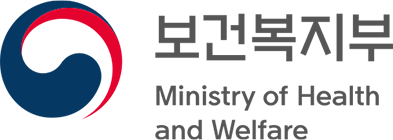Title
Crooked nose can rhinoplasty truly correct it?Date
2024-03-11Views
4329
Medical Column

This is Dr. Jeong Ji Hyeok, plastic surgery specialist at AB Plastic Surgery. Many individuals inquire about the possibility of rhinoplasty straightening a crooked nose. In today's column, I will address whether rhinoplasty and correcting a crooked nose can be performed simultaneously.
Q. My nose crooked a lot, is it still possible to correct it with rhinoplasty?

In any case, including crooked nose, it does can be corrected by rhinoplasty.
In many instances, patients who attend consultations often mention that their nose appears crooked. A crooked nose is characterized by a deviation from the straight line that runs from the glabella to the tip of the nose, with a noticeable bend to one side, away from the center. Some individuals may refer to a bumpy hump on the nose as a crooked nose sometimes. If you have concerns about it, rest assured that various nose types, including crooked, hump, flat, short, and bulbous noses, can all be corrected through rhinoplasty.

After undergoing rhinoplasty, the face may not achieve perfect symmetry due to the natural structure of the human body, thus it may resulting in a slightly uneven appearance.
Usually, when gazing into the mirror, it's common for people to perceive their nose as being in the middle line. Surprisingly, most noses are not perfectly centered on the face. It's rare to find a nose that aligns precisely in a straight line between the eyes, cheeks, and jaw. During rhinoplasty, straightening the nose along the connecting central points doesn't always ensure correcting a crooked nose. Factors like larger cheekbones or broader jaw areas can make the nose appear asymmetrical from certain angles, even if it seems centered on the face. After fixing a crooked nose, there are instances where it may look more bent or twisted. To address this, it's crucial to plan rhinoplasty meticulously by analyzing facial structures internally and externally through specific-angle photos and 3D-CT imaging before the surgery. This approach helps determine the most suitable nasal bridge direction that complements your unique facial characteristics.

"In rhinoplasty, the process usually includes making room for dorsal augmentation to accommodate implants such as fillers or autologous tissues. For hump reduction, protruding bones may be trimmed, and if the nasal tip is low, surgical correction is carried out. Furthermore, functional issues like septal deviation or nasal valve stenosis are commonly corrected and enhanced during the rhinoplasty procedure."
The nose, centrally positioned on the face, plays a pivotal role in defining one's appearance. Evaluating facial asymmetry is crucial, and consulting a plastic surgeon for a safe surgery plan based on a comprehensive analysis using diverse tools is essential. Recognizing how modifying the nasal bridge in various ways can help correct asymmetry, focusing on areas like the nasal tip, dorsal hump, and protruding bones, is vital. It is advisable to visit a clinic for a thorough examination with advanced and meticulous equipment.

If you have any further questions about crooked nose rhinoplasty, please call 010-4393-1298 or contact AB Plastic Surgery on WhatsApp for more detailed consultation.






